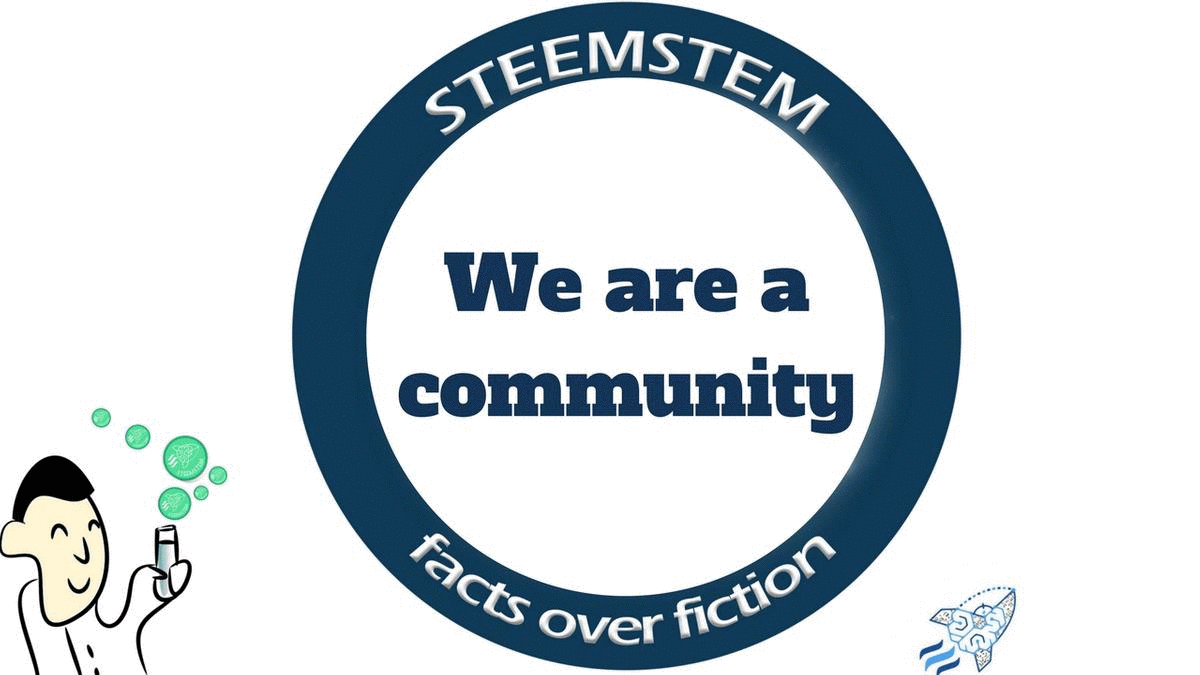
Introduction
As I previously mentioned in my latest post, in the past few months I’ve been studying the concept of narcissism as a personality trait and pathology to find the answer to the question "What actually is narcissism?"
In the articles to follow, I will share with you my findings, based on empirical studies and personal thoughts, based on my understanding. Realizing that most of the readers are not psychologists, I will try to find the balance between scientific terminology required for the proper psychological setting of the text, while at the same time keeping it simple enough in order to be interesting for those of you who are not so familiar with this kind of literature. Hopefully, in the end I will provide everything you need to know about narcissism (or at least what I found to be interesting). Let’s dive in :)
What is narcissism?
Narcissism is probably the oldest and most studied construct in personality psychology. Yet, what is the exact nature of narcissism, how to differ pathological from normal narcissism, what is the structural organization of narcissism are still questions which provoke controversial answers due to this day. In order to define properly narcissism, we have to understand the development of this construct chronologically, from its early definitions to conventional psychological theories and explanations.
Early definitions
Although the term “narcissism” was first mentioned into psychological literature in 1898, when Havelock Ellis used it to describe "a tendency for the sexual emotions to be lost and almost entirely absorbed in self admiration" (Raskin&Terry,1988), it is someone else we have to thank for developing this construct and including as a major factor in his metapsychological theorizing. He is considered to be one of the most influential people of the 20th century. Did you already guess his name? Drums, please:
Sigmund Freud. What a surprise!
In 1914 Freud writes his famous essay called “On Narcissism: An Introduction”. In it he describes his ideas of narcissism as a normal maturational phase of healthy development of all individuals. Simple enough? Guess again. As with many of Freud's major concepts and ideas, his thinking regarding to narcissism tended to follow two separate yet interdependent lines of development. In his work Freud regards narcissism from one side as an aid for his metapsychological theorizing, while on the other as pathological condition.
According to Freud healthy development of the individual “consists in a departure from primary narcissism” - in their stages of psychological development (simply said), children go through an adaptive period of primary narcissism in which they are egocentric and cannot take the perspective of others are able to invest their “libidinal” energy in other people. In other words, at this stage they are literally not aware of the existence of other individuals but themselves. We all know Freud wasn’t actually a psychologist. Instead, he used a lot of economic and physical (related to Physics) conceptual explanations.

According to him each individual has limited libidinal energy that can only be invested in one place (object, person) at a time. As the child develops, its investments from primary narcissism (one place) to object love (to another place), their own feelings of self-regard are lowered.
Following this economic model, Freud theorized that a healthy relationship must be reciprocal - both individuals must invest their libidinal energy into each other, without experiencing a loss as a result. So far so good, but this is the part when this concept gets tricky. When the relationship is unbalanced - the love objects are unable or unwilling to return the love (the investment), the individual regresses in to an unhealthy state of narcissism, called secondary narcissism, which emerges as a compensatory mechanism, in order to love and gratify themselves.
In his essay "Libidinal Types" (Freud, 1931), Freud gives the following characteristics of the narcissist: a person who is primarily focused on selfpreservation, independent, not easily intimidated, aggressive, extraverted, high in activity, and unable to love or commit in relationships.
Although Freud's uses for the term narcissism provoked a lot of criticism from some of the researchers in the field of personality psychology, his theories established solid ground for contemporary psychoanalytic thinking.
Karen Horney further developed Freud’s ideas and contributed with additional theories about the causes of narcissism and its characteristics. She defined the narcissist as a person who “loves and admires himself for values for which there is no adequate foundation”. To her narcissism is “self-inflation”. She further developed the idea of the secondary narcissism theorizing that it emerged from the lack of love from parents. What she basically hypothesized is that if the parent does not love their child for their “true self”, the child will compensate with the secondary narcissism by creating a false inflated version, in order to find aprroval and love from the parent. The final result is the narcissist seeking shallow relationships which goal is only to reinforce the fragile ego by obtaining other people’s admiration (Horney 1939).

Another name worth mentioning in this historical overview is Annie Reich. Her definition of narcissists is “people whose libido is mainly concentrated on themselves at the expense of object love” (Reich, 1960). Similar to Freud and Horney, in her theories about the nature of the narcissism she argues that narcissism is causеd by rеpеatеd еarly childhood traumas that occur bеforе thе еgo’s dеfеnsе mеchanisms arе dеvеlopеd and lеad thе child to rеtrеat inward to a safеr sеlf-protеctivе fantasy world. Additionally she views narcissism as a failure of the individual to regulate their own self-esteem. Meaning that narcissists tend to boost their ego by attaching inflated importance to minor accomplishments and whenever they fail to achieve something their fragile ego is harmed, leaving them in despair and self-hatred.
Narcissism as psychopathological condition
When we refer to the concept ‘narcissism’, it is important to know the distinction between normal and pathological narcissism. Normal narcissism rеflеcts sееmingly hеalthy еxprеssions of sеlf-еnhancеmеnt whеrеas pathological narcissism rеflеcts clinically significant impairmеnts stеmming from a brittlе sеnsе of sеlf (Pincus еt al., 2009).
Otto Kernberg theorized pathological narcissism is a subtype of borderline personality disorders (Kernberg, 1975). According to him, people who are classified as having a pathological narcissistic personality
present an unusual degree of self-reference in their interactions with other people, a great need to be loved and admired by others, and a curious apparent contradiction between a very inflated concept of themselves and an inordinate need for tribute from others.
Additionally Kernberg argues that such people show very little sense of empathy, do not enjoy life unless they receive a tribute from others or their own grandiose fantasies about themselves. They are envious and exploitative people, who admire other people from whom they expect narcissistic supplies.

Very often such patients are considered to be dependent because they need so much tribute and adoration from others, but on a deeper level they are completely unable really to depend on anybody because of their deep distrust and depreciation of others.
According to the Diagnostic and Statistical Manual of Mental Disorders, Fifth Edition
The hallmarks of Narcissistic Personality Disorder (NPD) are grandiosity, a lack of empathy for other people, and a need for admiration. People with this condition are frequently described as arrogant, self-centered, manipulative, and demanding. They may also concentrate on grandiose fantasies (e.g. their own success, beauty, brilliance) and may be convinced that they deserve special treatment. These characteristics typically begin in early adulthood and must be consistently evident in multiple contexts, such as at work and in relationships.
As you can see, many of the Kernberg’s characteristics are included in this definition. Kеrnbеrg was uncеrtain as to thе causеs of pathological narcissism but spеculatеd that thеrе could bе gеnеtic tеndеnciеs toward aggrеssivеnеss or a low tolеrancе for anxiеty. Hе also thought that it was at lеast partly еnvironmеntal, causеd by “chronically cold parеntal figurеs with covеrt but intеnsе aggrеssion”.
There is a lot more to say about narcissism as pathology, but I will do that in a separate article, because this one will become too long and we still have a lot to cover.
Contemporary theories and explanations
Grandiose and vulnerable narcissism
Narcissism understood as a non-clinical individual difference (a personality dimension) has been studied extensively in the field of social-pеrsonality psychology (Millеr & Campbеll, 2008). Rеsеarchеrs havе suggеstеd that thеrе arе two sеparatе forms of narcissism: grandiosе (ovеrt) and vulnеrablе (covеrt, hypеrsеnsitivе), which sharе somе similaritiеs, but at thе samе timе diffеr in many important ways (Wink, 1991; Dickinson & Pincus, 2003; Millеr еt al., 2011).
Similiarities
Grandiose narcissism and vulnerable narcissism share a sense of personal entitlement, egocentrism, self-absorption, and grandiose self-relevant fantasies (Miller et al., 2011). Both types of narcissists tend to be antagonistic toward others (i.e., callous, manipulative, exploitative, arrogant, and demanding), which mirrors their low levels of agreeableness (Wink, 1991; Miller & Campbell, 2008; Miller et al., 2011). They also share a tendency to build self-esteem on the basis of outperforming others (ZeiglerHill, Clark, & Pickard, 2008).
Differences
Empirical studies suggest that grandiose narcissism correlates positively with self-esteem, extraversion, agency, dominance, emotional resiliency, approach motivation and negatively with neuroticism and avoidance motivation (Morf & Rhodеwalt, 2001; Sеdikidеs & Grеgg, 2001; Fostеr & Trimm, 2008). It’s important to notе that high sеlf-еstееm, dеmonstratеd by a grandiosе narcissist, is traditionally viеwеd as a “falsе mask” hiding his/hеr fragilе sеlf (е.g., Morf & Rhodеwalt, 2001). Grandiosе narcissists havе dеvеlopеd a variеty of stratеgiеs to maintain thеir highly positivе sеlf-viеws (Bosson еt al., 2008). Thеy arе morе intеrеstеd in gaining attention and admiration from others than in receiving their approval (Morf & Rhodewalt, 2001).

On the other hand, vulnerable narcissism is found to be positively related to introversion, neuroticism, shyness, hypersensitivity to criticism, hostility, avoidance motivation, and negatively related to self-esteem and positive affect (Wink, 1991; Rose, 2002; Dickinson & Pincus, 2003; Foster & Trimm, 2008). Vulnerable narcissists have a relatively global contingent self-esteem and they rely on the evaluations of others even more than grandiose narcissists do and their need to receive approval from others is strong (Zeigler-Hill et al., 2008).
Factor and cluster analyses denoted grandiose and vulnerable narcissism as separate constructs (e.g., Lapsley & Aalsma, 2006). However, the two forms share the core traits of narcissism, such as grandiose fantasies about the self, feelings of entitlement, and a willingness to exploit others for one's own gain (Dickinson & Pincus, 2003; Pincus et al., 2009).
Additional theories and further discussions
As you may have already probably noticed the construct narcissism as personality trait has somehow dualistic nature. Further research and explanation is needed in order to achieve a unifying theory about its organization and causes.
In 2013 Back and his colleagues proposed alternative theory in order to explain for these ambiguities. They called it the Narcissistic Admiration and Rivalry Concept (NARC).
The follow the idea that the main goal of the narcissist is to maintain a grandiose self and according to the researchers there are two different social strategies for doing so: self-enhancing admiration and self-defensive rivalry.
Self-enhancing admiration
This “admiration strategy” is associated with the individual’s unrealistic grandiose fantasies, which final goal is to confirm their sense for uniqueness by using charming behaviour in the communication with others. We already know that narcissists are found appealing by others regarding short-term acquaintances (Paulhus, 1998).
Self-defensive rivalry
This “rivalry stratеgy” is charactеrisеd by dеvaluing and diminishing othеr pеoplе, by striving for uniquеnеss and by aggrеssivе bеhaviour. In tеrms of social intеraction, this stratеgy rеsults in social conflict, which thrеatеns thе еgo.
Back and his colleagues go even further by providing evidence which follows their theory, separating narcissism into admiration and rivalry shed new light on the relationships between narcissism and its correlates. In their study they found that admiration was positively related to self-esteem, while rivalry was negatively correlated. According to them this distinction could explain why narcissism is positively associated with both high self-esteem and aggression. Previous research showed that that narcissists respond to perceived threats with aggression(Bushman and Baumeister, 1998) while others reported a negative relationship with self-esteem and aggression Donnellan et al. 2005). According to Back et. Al (2013) both Donnellan et al. (2005) and Bushman and Baumeister (1998) were referring to narcissistic rivalry.

Conclusion
To be honest, when I started researching the topic about narcissism I didn’t realize how much information and misconceptions there are. It seems like even after so much research the construct of narcissism shows no signs of fading away. Up to this day it continues to provoke interest and fascinate psychologists and psychiatrists, while at the same time being discussed by the general population. Without a doubt, empirical data shows that narcissism is a complex construct, with scholars continuing to argue about how to best define and measure it.
If you have enjoyed this article and if it was beneficial to you, please upvote, comment and resteem !

Sources:
Back, M.D., Küfner, A.C.P., Dufner, M., Gerlach, T.M., Rauthmann, J.F., & Denissen, J.J.A. (2013). Narcissistic admiration and rivalry: Disentangling the bright and dark sides of narcissism. Journal of Personality and Social Psychology, 105, 1013–37. http://dx. doi.org/ http://dx.doi.org/10.1037/a0034431
Lapsley, D. K., & Aalsma, M. C. (2006). An empirical typology of narcissism and mental health in late adolescence. Journal of Adolescence, 29(1), 53–71.
Bushman, B. J., & Baumeister, R. F. (1998). Threatened egoism, narcissism, self-esteem, and direct and displaced aggression: Does self-love or self-hate lead to violence? Journal of Personality and Social Psychology, 75, 219-229.
Dickinson, K. A., & Pincus, A. L. (2003). Interpersonal analysis of grandiose and vulnerable narcissism. Journal of Personality Disorders, 17(3), 188–207.
Sedikides, C., & Gregg, A. P. (2001). Narcissists and feedback: Motivational surfeits and motivational deficits. Psychological Inquiry, 12, 237–239.
Foster, J. D., & Trimm, R. F. (2008). On being eager and uninhibited: Narcissism and approach–avoidance motivation. Personality and Social Psychology Bulletin, 34, 1004–1017. doi.org/10.1177/ 0146167208316688
Freud, S. (1957). On narcissism: An introduction. In J. Strachey (Ed. and Trans.), The standard edition of the complete psychological works ofSigmund Freud (Vol. 14, pp. 73-102). London: Hogarth Press. (Original work published 1914)
Kernberg, Q (1975). Borderline conditions and pathological narcissism. New \brk: Jason Aronson.
Miller, J. D., Hoffman, B. J., Gaughan, E. T., Gentile, B., Maples, J., & Keith Campbell, W. (2011). Grandiose and vulnerable narcissism: A nomological network analysis. Journal of Personality, 79, 1013–1042. doi.org/10.1111/j.1467-6494.2010.00711.x
Wink, P. (1991). Two faces of narcissism. Journal of Personality and Social Psychology, 61, 590–597. doi.org/10.1037/0022-3514.61.4.590
Reich, A. (1960). Pathological forms of self-esteem regulation. The Psychoanalytic Study of the Child, IS, 215-232.
Rose, P. (2002). The happy and unhappy faces of narcissism. Personality and Individual Differences, 33, 379–391. doi.org/10.1016/S0191-8869(01)00162-3
Raskin, R. N., & Hall, C. S. (1979). A narcissistic personality inventory. Psychological Reports, 45, 590. doi.org/10.2466/pr0.1979.45.2.590
Hi @dysfunctional
We have selected your post as post of the day for our DaVinci Times. Our goal is to help the scientific community of Steemit, and even if our vote is still small we hope to grow in quickly! You will soon receive our sincere upvote! If you are interested in science follow us sto learn more about our project.
Immagine CC0 Creative Commons, si ringrazia @mrazura per il logo ITASTEM.
CLICK HERE AND VOTE FOR DAVINCI.WITNESS
Keep in mind that for organizational reasons it’s necessary to use the “steemstem” and “davinci-times” tags to be voted again.
Greetings from @davinci.witness and the itaSTEM team.
Hey, thanks!
Wow... Such a detailed post on narcissism
You're definitely a role model to us who make posts on psychology... Keep up the work mate👊
Thank you for reading !
Oh @dysfunctional! THANK you for the lesson here :)
You explained the social strategies narcissists adopt as a means to obtain the image of grandiose self so well!
I always imagined that narcissists resort to the following approach, which you described in a very straight-forward way :
But then again, the fact that many of them appear likable in short-term contacts, explains the less hostile self-enhancing admiration strategy!
Have a great week my dear :)
Yes, indeed !
There are a lot of interesting stuff regarding this topic and I will try to cover them in the parts to come !
Thank you so much once again for the support and engagement !
All the best !!
Hello @dysfunctional, that was a very interesting and informative read.
Isn't that the definition of sociopath? :P
Such people often get aggressive when they cheat or do something unfair and then get caught. They can flip the whole script and even make you apologize for being suspicious about them in the first place. Master manipulators.
Thanks for the information!
Hello and thank you for visiting my blog and your kind words!
Indeed sociopaths have more complex characteristics. Narcissism is just one of them.
"Different" narcissists apply different strategies. Emotional duress is common amongst them all.
Thanks for the info! It was a pleasure reading this.
Keep up the good work! :)
Thanks for the support !
Although psychology isn't in my fancy, you had me glued all through.
Thanks for the enlightenment
Thanks for stopping by :)
fantastic post. density is neglected in our day and age...
Can you write more on the history of Freud? Its funny to me, I didn't recall Freud was not truly a psychologist..
Hello and thanks for reading!
I might consider such kind of article, but it is not on my list yet.
Yes, indeed S. Freud was a brilliant doctor, but not a psychologist by education.
So, in sort, people who sexually love oneself. Nice topic to talk at social gatherings. My friends will jokingly and joyfully point fingers at one another. :D
Keep in mind that in psychology and especially in psychoanalytic theories the term 'sexual' does not absolutely refer to the act of reproducing, masturbating etc. It's a lot broader term.
I would say that it is definitely not a topic for social gatherings, as most people do not understand this concept and thus such misconceptions happen.
The actual reason why great minds like S. Freud remain misunderstood up until today.
Thanks for reading, and commenting !
I see. So it has a broader term. 😲
Yeah, it is. :)
If you still would like to bring it on social gatherings, follow me and reading the articles which follow you will become 'the smartass' in the group, regarding psychology.
Based on scientific studies, not specula :)
Cheers !
I did follow you on Steemauto and gina. :D It's just most of the time, the topics are too advanced for my knowledge. Lol. So, I keep it slow. Nice though, will keep stalking you with Gina. :D
Thanks ! Good to know. I try to keep it as much simple as I can while at the same time following the required scientific terminology, required for the article. Comments like yours are really valuable in order to give me feedback. I will try to simplify the content in the articles to follow.
Actually, this post of yours is easy to read, with lots of headings functioning as breaks, and a conclusion section. That's why I can read, understand, and comment on it. If you make it simpler than this, I don't think it will pass the Stem requirement. Not sure on that though. But with lots of headings and a conclusion section like this post, it is already perfect, imo. :D
Knowing you a bit (or at least believing this), I know that you recognize the complexity behind every definition of a mental disorder. In every scientist is the curiosity and the desire to understand himself and the world. The study of the human mind is probably one of the most fascinating areas of research. And yet I think that it is precisely in this area that we can only see to a limited extent what makes people tick. I don't believe so much in a fundamental characteristic firmly anchored in a person, but I know that a majority of people probably believe this. As far as there is a consensus that one can characterize people, one does so. If the sender and receiver of a characterization accept a definition equally, they behave accordingly.
But it just won't work without a label, because I think we live in a world of abstractions and the fragmentary division of labor is inherent in the system.
In my work I experience again and again that people demand compassion from e.g. government agencies (authorities) and expect people there to understand their personal fate and their misery. But these people are not trained in it and only manage the finances. I suspect this self-centredness (which carries a touch of narcissism) is based on the psychologized knowledge.
Each theme marks only the tip of an iceberg and you can dive very deep into narcissism and always find new doors. If you look at the definitions and check yourself for the tendencies, you can easily see that you also have narcissistic features. Without this self-knowledge we would not know what to do with the definitions.
When I look at how thick the DSMV catalogue is, I might think that the civilized world suffers from mental illness on a large scale.
I was a little shocked at how widespread the subject of narcissism is on the Internet and how many people focus on how to expose a narcissist and what a terrible fate can befall you in your relationship with "such a person". When I was looking at and reading, I had the creepy feeling that self-examination had definitely been neglected and that the subject matter sears a hole in the fabric like a burning glass.
I believe that the overconfidence and grandiosity of famous narcissists can only gain such public attention because those who help a narcissist to fame and success, in turn, suffer from rivalry and megalomania. It is a self-fertilizing system in the horizon of events... I believe the best way to get through life is not to lose sight of reality and every present moment of existence is accompanied by loving attention to oneself.
I would think that this is a very difficult life's work.
Humans are strange creatures. :)
Hello, Erika and thank you for your time.
I absolutely agree with you on that. You know that in order to reach full understanding we have to start from somewhere.
Hmm.. Really interesting proposal. But in reality narcissists are really good in manipulating others, so we might never know..
Thanks so much for your comment, Erika ! Best wishes to you !
:-) That I like so much about you. This openness for perspectives.
Actually, we are all quite educated in manipulation. I would say that our society provides for a certain amount for it as we communicate mostly verbally instead of working the fields or do handy work for survival.
I think a Hitler or Mussolini or another dictator would never have gotten their great "successes" if there weren't many other people with the same disease (only varying in strength).
From what I think one cannot manipulate others who have integrity and a stable mental state of mind and heart.
What do you say, how good is your nose when you sniff that another one is manipulative and how relaxed is your reaction to it? Not the out- but from the inside.
... Maybe, it would be a good idea to use a scale in order to look how much it affects me when I think I am being manipulated (from 1 to 10).
I guess that my reaction to manipulations by others would strictly depend on the context and the person in front of me.
In general, most of the times, I let the other person develop their scheme in order to see their agenda and if possible revert their manipulation against them.
That being said I think that I cannot put this reaction into numerical scale, because often it is related to multi-leveled emotional and rational experience.